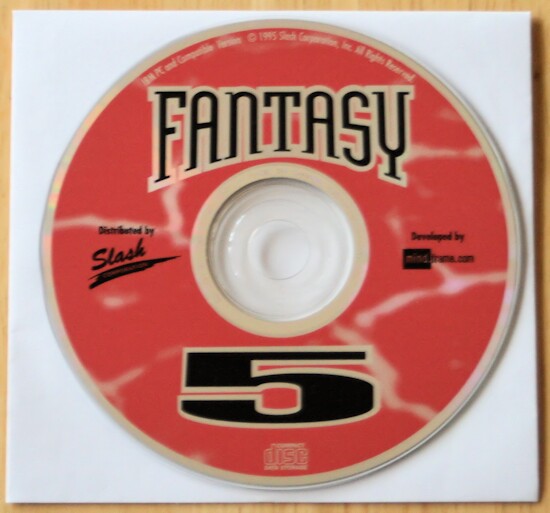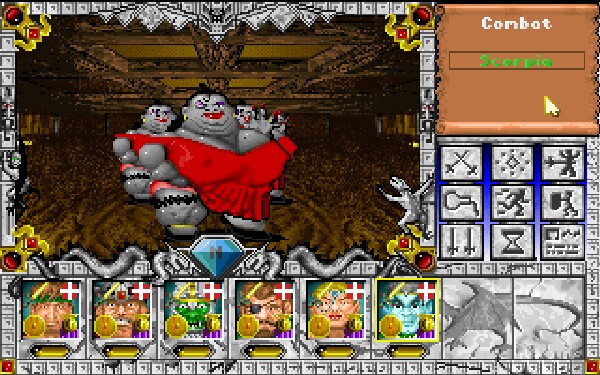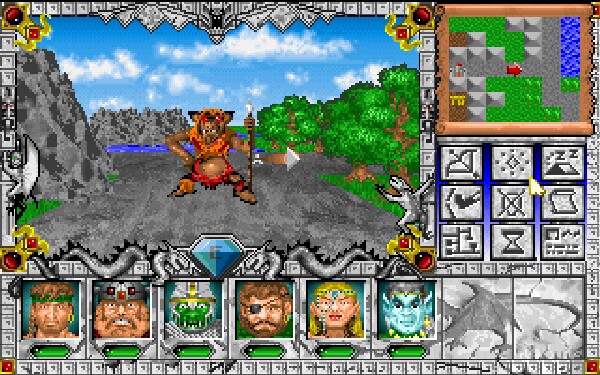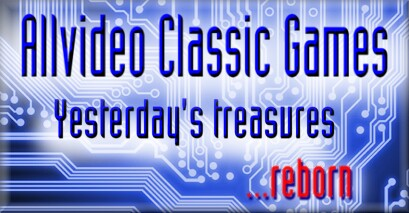
Actual Game
Might & Magic III
|
The Game
When Might and Magic III was released in 1991 it was immediately a big hit, especially among college-age gamers. This is not surprising, as the game represented a visible leap forward in RPG design, compared with the previous two chapters. MM III was a get together-and-play kind of game that could entertain both the person sitting at the controls and the people watching over his shoulder.
Given the state of the art in the early 90s, the interface is a joy, with a 3D display window, that we take for granted today, in which all the action unfolds in real time; a row of face icons, one for each of the up to eight characters in one's party, that allows quick access to the party's skills, possessions, and information; a mouse driven action menu that changes into a combat menu when danger threatens and clever graphic signals scattered around the screen to serve a variety of functions. (For example, there's a gremlin crouched in one corner of the display window who waves his arm when a secret passage is near.) Combat and movement are quick and the controls are responsive, which in this case makes the difference between a game that would be good but frustrating and one that excels.
Might and Magic III was the first in the series to use 256 VGA graphics, as well as the first to use sound cards, to superb effect, including a good helping of speech. It is easy to see why Might and Magic IV won awards for its audio production with this installment as its foundation. The results floored me in 1991: For example, the game begins with a full-screen image of arch-villain Sheltem describing in digitized audio the menaces which the player is about to face. Also, at the other end of the game, when a player's last character dies, a pair of giant dragon jaws clamp shut over the screen before the final fade to black. Memorable.
Might and Magic III was a top-of-the-line system showpiece, marrying the aesthetic sophistication of then in vogue "interactive movies" to the down-and-dirty campaigning of a hardcore RPG. There is something to please almost every stripe of gamer.
MM III comes with a Silmarillion-esque backstory (which also doubles as an inoffensive anti-piracy device) describing the epic history of a War Among the Gods and the subsequent intercession of some benevolent meta-Gods with cosmic names like Esoterica and Cosmonium.
It is understandable why game of this nature would be massively popular. The early 90s was a period where fantasy writers like David Eddings, Stephen Donaldson and Piers Anthony achieved New York Times bestseller status and mainstream success. It made sense to take the trend to epic RPGs.
MM III is an excellent game for games at both ends of the spectrum. RPG junkies hooked on computer AD&D and for whom familiarity is not a turn-off but a selling point, adored this release. I certainly did. Yet the game was accessible, bringing new fans to the RPG genre.
The story
In days of yore, when the warring Gods/Elements joined forces to destroy all the world's mortals (who might otherwise have become powerful enough to threaten them), five Forces of the universe took pity and stepped in, giving mortals a variety of powers and skills that would, over generations, develop into character classes. The mortals survived; and when the combat ended, the Forces took the battleground of the Gods and crumbled it into the sea, the result being the thirteen magical Isles of Terra.
Jump to the present: Master wizard Corak has gone alone on a journey around the Isles to recover the fragments of this primal legend and to thwart Sheltem's plan, though he cannot fathom the the details of it. Suffice to know that it has something to do with playing Alignments against one another. All looks bleak until our stalwart band of six adventurers appears upon the scene. There are three major tasks at hand: Track down Corak, who is still unaccounted for; rediscover the legendary origins and secrets of Terra along with him; and destroy Sheltem once and for all.
Starting from the small, but representative, town of Fountain Head, the player's party has to go out into the wilderness, search swamp and mountain, town and country, and slaughter, slaughter, slaughter the armies of the night. Character growth occurs through a series of mini-quests that are mostly presented to the player by NPCs.
Each town contains locations where characters can be healed, fed, replaced, armed, trained, shod, or killed. Experienced gamers will need no time at all to get used to this gallery of old haunts. Each town is built on more or less the same plan. NPCs offer hints and rumors as well as the usual services, but then again, hints and rumors are one of the usual services in games like this.
Puzzles turn up, after a fashion, most having to do with unearthing something hidden or getting from one place to another. None are especially difficult. As with the entire Might and Magic series most of the fun in the game comes from ordinary encounters, especially combat, since a lot of energy is traditionally spent on making the graphics and animation interesting. Some weapons and spell effects appear in the display window, even those that do not produce splotches of blood to indicate a successful hit. The faces of the player's character icons change expressions in response to various attacks and get replaced with a tombstone once they have shuffled off this mortal coil. All monsters are well-drawn and at least minimally animated, with unique sound effects for added spice.
The support screens - inventory, status, spellbook - were the most attractive and best organized I had ever seen at the time. Access to them is well thought out, since the player can shift from one character to another within any sub-screen. This makes it a breeze to equip the party and exchange supplies among party members. Though it might not occur to you immediately (at least it did not occur to me) an efficient back-end interface is crucial to the success of an RPG. Building up a powerful party is a staple of the genre so you will spend much of your time navigating through these screens. A superb job by New World.
Might and Magic III was a bestseller because of its accessibility. The learning curve was very light and the adventure itself was a stunning implementation of venerable concepts that grabbed its intended audience. Isles of Terra was another fantastic chapter to an exceptional series.






